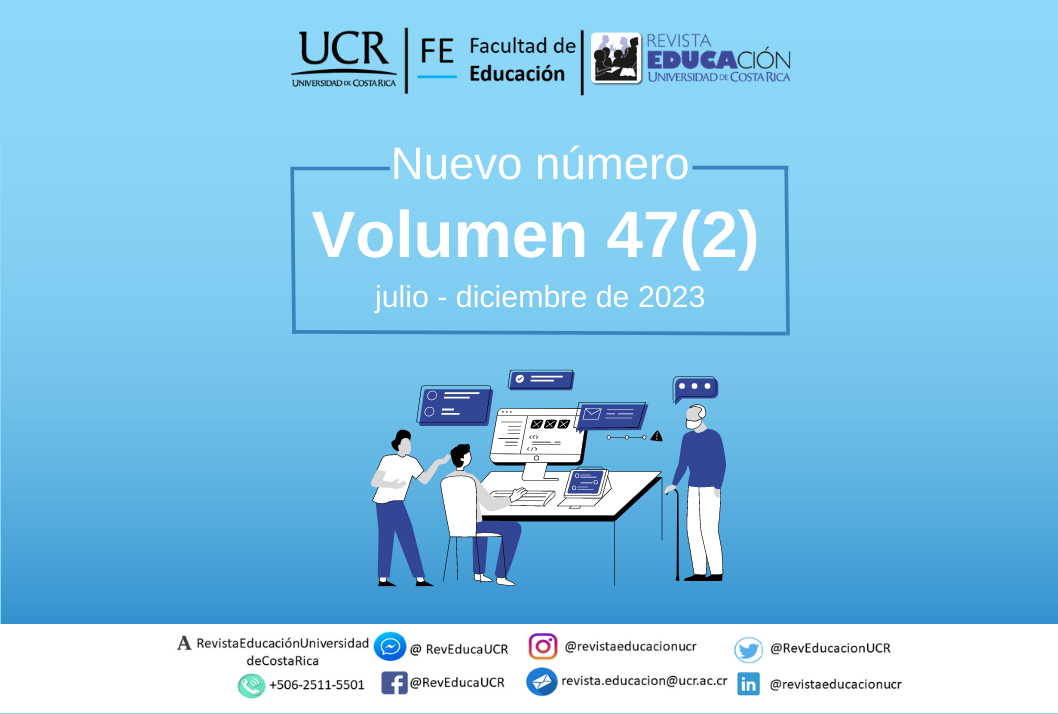Abstract
This investigation was conducted at the Lugansk State Academy of Culture and Arts named after Mikhail Matusovsky at the Faculty of Fine and Applied Arts at the Department of Graphic Design and Department of Easel Painting, as well as the Lugansk College of Technology and Design. The research aimed to propose a pedagogical model for the development of artistic and imaginative thinking and, in particular, the active implementation of the stylization of artistic method in the educational process. The researcher employed a stratometric method to sample the working groups. Eight study groups, of 16 people each one, with certain characteristics participated in the experiment. The study revealed the experiments that were used to implement the work methodology, identifying abilities and artistic vision of students it is search-and-transform, ascertaining, forming, and control experiments. Also, the analysis and comparative characteristics of the initial stage and the final stage of the experiment were carried out, the results of which are shown, which prove the effectiveness of the method and pedagogical methodical model. Finally, as a conclusion, the author refers to the need to introduce new methods in the educational process and their application in the disciplines of the artistic cycle. Moreover, it is recommended to analyze an object and to decompose it into simple components, thereby finding its structure formation. The result will be the creation of a work of art that is endowed with inner content.
References
Belyaeva, S., & Rozanov, Е. (2006). Special drawing and art graphics: textbook for universities. Academy.
Grigoryan, E. (1986). Fundamentals of composition in applied graphics. Yerevan.
Kukhta, M. S., Sokolov, A. P., Krauinsh, D. P. y Bouchard, C. (2017). Stylization levels of industrial design objects. Journal of Physics: Conf. Series, 803(1), 012082. https://iopscience.iop.org/article/10.1088/1742-6596/803/1/012082
Lanshchikova, G. A. y Skripnikova, E. V. (2016). Transformation and stylization in artistic compositional form creation. International research journal, 8(50), 48-50. https://doi.org/10.18454/IRJ.2016.50.101
Medvedev, L. (1986). Formation of a graphic artistic image in the classroom for drawing: Proc. allowance for students HGF ped. in-comrade. Enlightenment.
Morozov, A. (1981). Artist and the world of personality: Creative problems of modern Soviet portraiture. Sov. Artist.
Parkhomenko, N. A. y Parkhomenko, K. A. (2022). Stylization method as a way of forming visual literacy and figurative thinking in an artist, designer. Scientific Journal of Pedagogy and Psychology. Univers Pedagogic, 3(75), 22-27. https://doi.org/10.52387/1811-5470.2022.3.10
Sokolova, E. (2017). Stylization as a methodological means of the relationship between natural and decorative drawing: monograph. VSU named after P. Masherova. 211.
Sokolova, E. (2013). Stylization as the most important principle of the relationship between natural and decorative drawing. Lecturer XXI century, (4), 194-203.
Sokolnikova, N. & Crane, V. (2006). History of styles in art. Gardariki.
Sokolnikova, N. (2022). History of styles in art: textbook and workshop for universities. Yurayt.
Shagova, T. (2008). Theory and methods of teaching fine arts. NGPI.
Shaikhulov, R. N. & Gutova, S. E. (2022). Decorative and graphic stylization in graphic design training. Culture, science, education: problems and prospects, 408-417. https://doi.org/10.36906/KSP-2022/55
Shokorova, L. (2019). Stylization in design and arts and crafts. - 2nd ed., revised. and additional. Yurayt.
Wolfflin, G. (2009). Basic concepts of art history. The problem of the evolution of style in the new art. Academy.
Comments

This work is licensed under a Creative Commons Attribution-NonCommercial-NoDerivatives 3.0 Unported License.
Copyright (c) 2023 Revista Educación - Journal of Education



